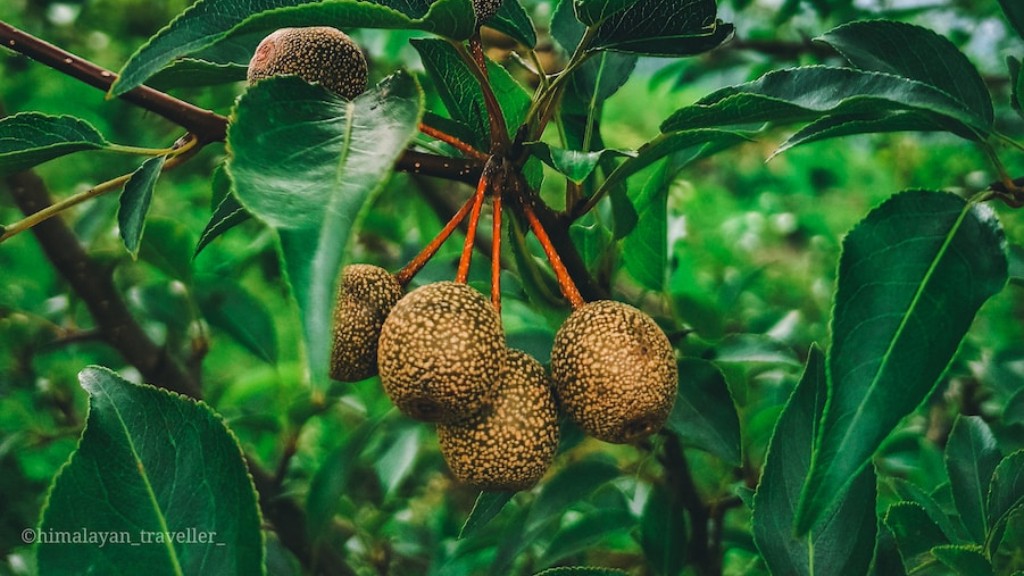Meyer lemon trees are one of the most popular winter-blooming citrus trees. They are sometimes referred to as “improved” lemons, since they offer an abundance of fruit with minimal fuss. But how often does a meyer lemon tree actually bloom?
Meyer lemon trees typically bloom once every year. The bloom tends to occur between late winter and early spring, sometimes as early as late December but usually around March or April. Depending on the climate, they may also produce multiple blooms at different stages of the growing season, but the main bloom usually occurs in the spring.
During its bloom, a meyer lemon tree is covered in fragrant blossoms, some quite large and others small enough to fall through the cracks of the tree’s branches. The flowers are white or pale yellow, and each hold within them the potential for sweet, juicy meyer lemons. After the blossom period is complete, the flowers will be replaced by the young fruit.
Meyer lemon trees require well-drained, slightly acidic soil and full sunlight in order to bear fruit. If these conditions are met, the tree will reward with year-round production of fruit. With each continual bloom, the tree will provide an ever-increasing load of delicious and highly coveted meyer lemons.
Frost is a major enemy of the meyer lemon tree and must be avoided; otherwise, frost can destroy the precious tree along with its hard-earned fruit. That’s why proper preparation and protection of the tree during its bloom is incredibly important. With proper care, a meyer lemon tree can enjoy a healthy lifespan and produce premium fruit every year.
Location
Where a meyer lemon tree is planted can ultimately determine when or if it blooms. In colder climates, meyer lemon trees need winter protection if they aren’t able to get enough direct sunlight. In these scenarios, the tree’s bloom may be delayed. And if it does occur, the weather may prevent full fruiting. On the other hand, meyer lemon trees thrive in sunny and warm climates, and can be planted in the ground as well as in pots.
When choosing a location for your meyer lemon tree, consider keeping it someplace where it can get at least 4 to 6 hours of direct sunlight a day. It’s also important to keep them away from cold drafts and other sources of chilling wind, which can disrupt its bloom. And fertilizing regularly with a specially-formulated fertilizer is essential to ensure proper nutrition and robust blooming.
Pruning
Pruning is an important part of meyer lemon tree care. Pruning helps keep the tree healthy and encourages strong, new growth. It also helps maintain the proper shape of the tree, so that sunlight and airflow can reach all of the leaves properly. Additionally, proper pruning will help to stimulate the tree’s bloom, so that it happens more frequently and productively.
When pruning a meyer lemon tree, it’s important to remember to remove any diseased or dead branches. It’s also beneficial to remove any overly-thick branches that are preventing sunlight from reaching other parts of the tree. Prune in a way that won’t affect the natural shape of the tree, and avoid removing too many branches at once in order to ensure successful blooms.
Fruit Harvesting
The harvest of meyer lemons is visually distinct from other citrus fruits, since each lemon is yellow when ripe. The skin on the fruit is thinner than that of other lemons, so it’s important to gather them when they are mature but still yellow. They can be harvested when they have reached full size but not yet started to dry out or turn brown.
Meyer lemons generally have a short shelf-life, so it’s important to harvest the lemons soon after they reach full size. Once harvested, they can be used fresh or preserved for later use. Fresh meyer lemons can be used for recipes, for juices and for homemade meyer lemon jams and marmalades. Preserved lemons are also a lovely way to use up an abundance of fruit and are a welcome addition to many recipes.
Watering
Watering is a critical part of meyer lemon tree care. Too much water can lead to root rot and disease, while too little can lead to fruit that’s small or misshapen, or even cause a tree’s production to decrease. It’s best to water the tree twice a week, deep and thoroughly, to ensure that the entire root system is saturated. This will promote healthy growth and abundant blooms.
Pest Control
Meyer lemon trees are susceptible to a variety of pests, including aphids, mealybugs, scale, and whitefly. When left untreated, these pests can infest the tree and stunt its growth, as well as reduce its bloom and fruiting capabilities. Thus, monitoring for pests and taking action when necessary is a key step in proper meyer lemon tree care.
Treating pests can be done with a combination of physical removal and miticides. Additionally, using beneficial insects such as ladybugs and parasitic wasps can help to ensure that any pests present in the tree can be successfully eliminated before they have the chance to wreak any further havoc. With proper pest control, a meyer lemon tree can thrive and bear abundant fruit.
Fertilization
A meyer lemon tree that is fertilized regularly will be healthier and more fruitful, with better blooms. When fertilizing a meyer lemon tree, use a citrus fertilizer that is specifically tailored to the tree’s specific needs. Fertilizing should be done every two to three months during the growing season, and can also be done once a year during the dormant period.
Fertilizers should be applied to the soil around the tree, and not directly onto the tree itself. Additionally, it’s important to water the tree thoroughly before and after applying the fertilizer, as this will help to ensure the fertilizer’s absorption into the soil. With regular fertilization, a meyer lemon tree can be provided with the nutrition it needs to bear healthy, abundant blooms and fruit.




